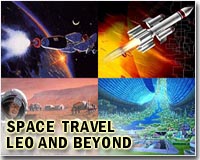 |
Paris, France (ESA) Jul 12, 2010 At the end of June, ESA's six astronaut candidates were thrown out of a helicopter, left to drift at sea and abandoned under the hot Mediterranean sun - but luckily they were well-trained and under supervision. Astronauts have to be prepared for almost everything in space, but also anything on the ground. This could be, for example, an emergency landing in a faraway place: spacecraft leaving the International Space Station may be forced to come down in the sea, desert, tropical rain forest or on a glacier, in summer or winter. Before the astronauts can be rescued, they may have to rely only on very basic items and the emergency pack in their Soyuz capsule. Therefore survival training is a vital part of basic training of all astronauts. The new European recruits, Samantha Cristoforetti, Alexander Gerst, Andreas Mogensen, Luca Parmitano, Timothy Peake and Thomas Pesquet, passed this milestone last week, when they spent two weeks in tough survival training learning and using the skills needed to stay alive in a harsh environment with very little equipment.
Camping, swimming, hunting and floating After theoretical and practical lessons, it was time for action. Assisted by the Italian police air force, coast guard, local authorities and the national mountaineering rescue organisation, the astronaut candidates were flown by helicopter to a remote location. They were asked to build a camp, make a fire and find food: fishing, trapping animals, preparing food and cooking with primitive tools. The future astronauts also stripped an old car for usable tools and parts, which they later used to build their shelters, traps and snares, and as fishing aids. They were introduced to the skills of climbing, descending high cliffs safely, crossing rivers and navigating in the wilderness using natural signs and the stars. Survival medicine was also a vital part of training. After three days, they were given dry clothes and a new mission: to hike to a rendezvous point across canyons, ponds and cliffs, find and treat water, and sleep overnight in an improvised shelter. Finally, the six were 'rescued' by helicopter, but the relief was short. They were forced to jump into the sea, inflate a liferaft and were left to float alone in the Mediterranean until the next morning.
Not only a nice day out But still the training was far from a holiday camp: drying clothes after river crossings or swimming in the sea takes time, climbing mountains requires good nerves and hunting animals for food is not something for city slickers - even for astronauts. "We were also quite hungry after the first 48 hours," remembers Tim Peake. "Sleeping in those conditions is not easy. It was hard, but when recalling it now, it was a nice experience." For the recruits with military backgrounds, survival training was not new. "But in the forces we mostly tried to find ways to be hidden, not to get found," laughs Tim, a survival trainer himself in his previous career in the British Army Air Corps, and praising the local instructors and the support they received. After 'surviving' the survival training, ESA's astronaut candidates are already on the home stretch before they can be officially called astronauts next autumn, when - and if - they pass the final exams.
Share This Article With Planet Earth
Related Links ESA Space Tourism, Space Transport and Space Exploration News
 Israel to launch civlian space program
Israel to launch civlian space programJerusalem (UPI) Jul 9, 2010 Israel plans to invest $77.5 million over five years to jump-start a space program that officials say could become a $10 billion civilian space industry. Israeli President Shimon Peres, a strong supporter of Israeli aerospace initiatives for years, said he expects the industry to develop into a major source of business, Haaretz reported Friday. Peres and Prime Minister Binyamin ... read more |
|
| The content herein, unless otherwise known to be public domain, are Copyright 1995-2010 - SpaceDaily. AFP and UPI Wire Stories are copyright Agence France-Presse and United Press International. ESA Portal Reports are copyright European Space Agency. All NASA sourced material is public domain. Additional copyrights may apply in whole or part to other bona fide parties. Advertising does not imply endorsement,agreement or approval of any opinions, statements or information provided by SpaceDaily on any Web page published or hosted by SpaceDaily. Privacy Statement |